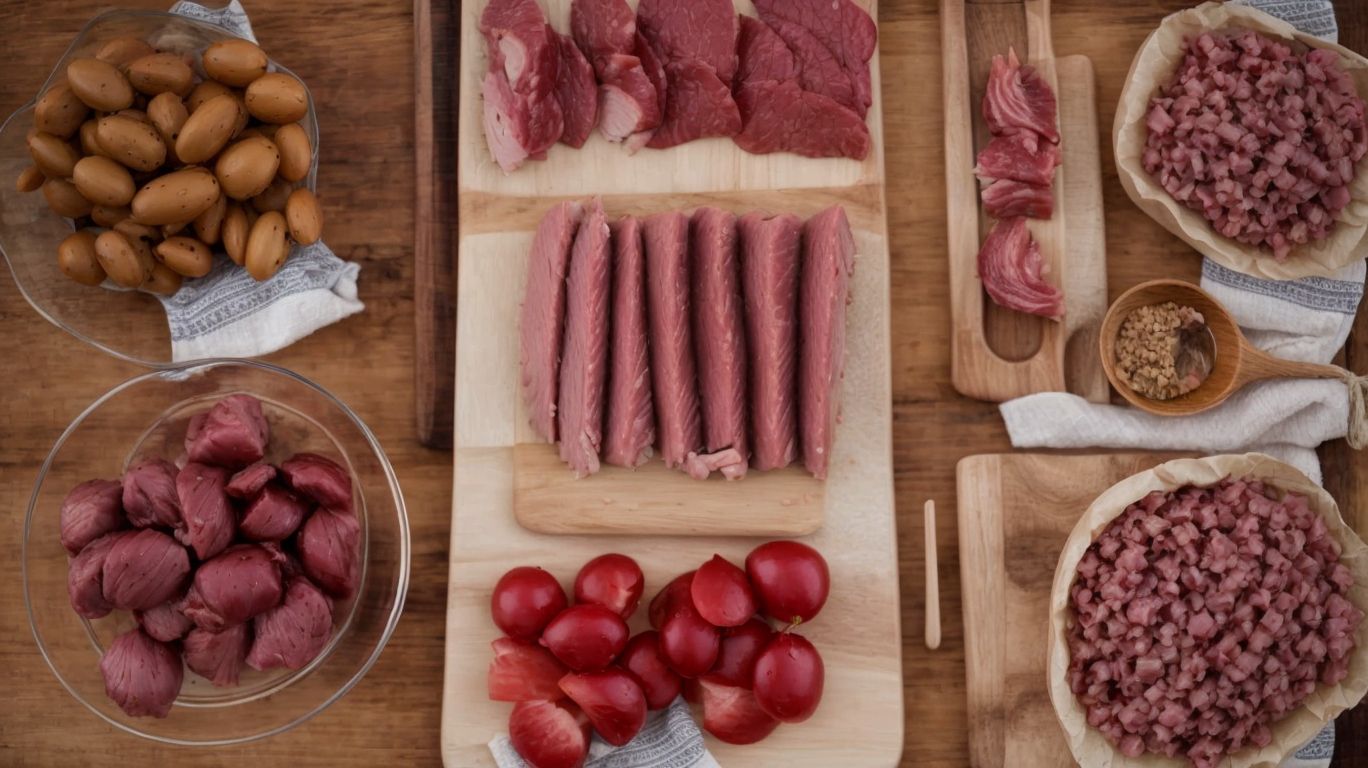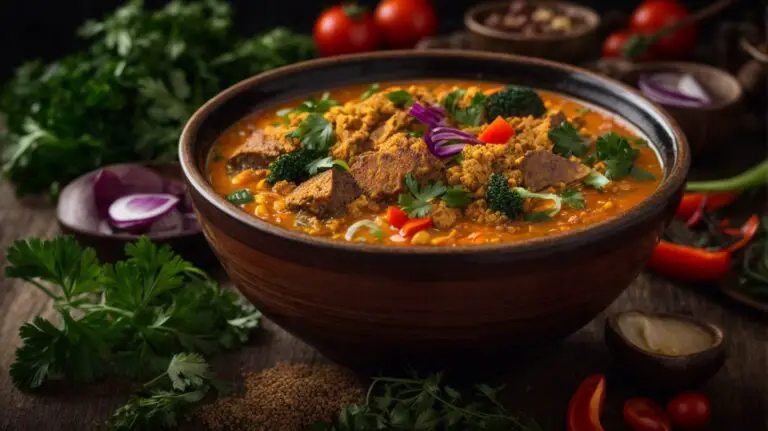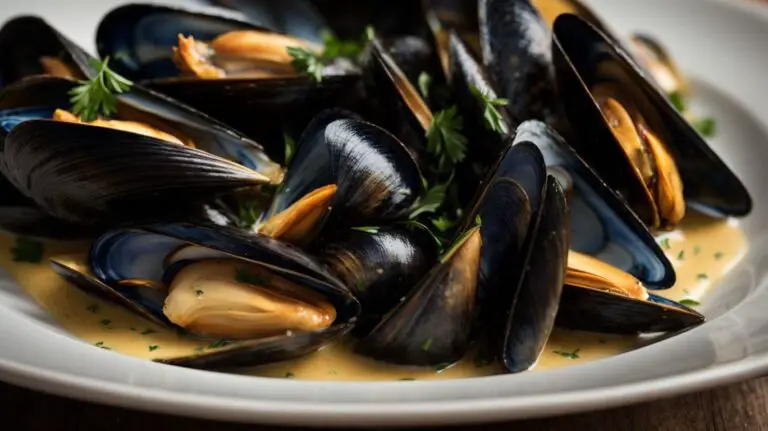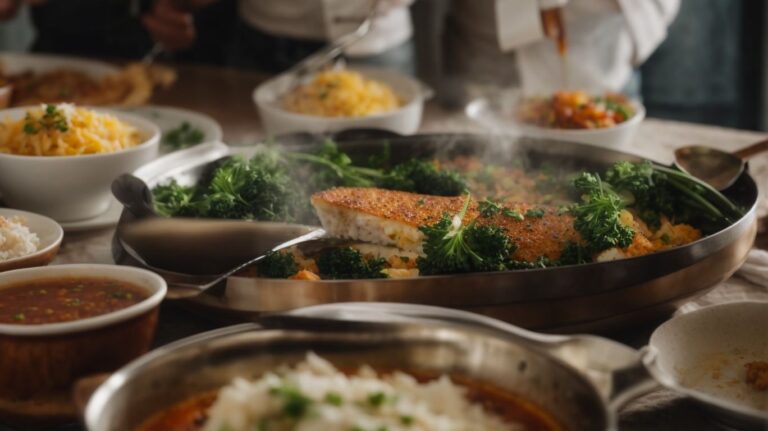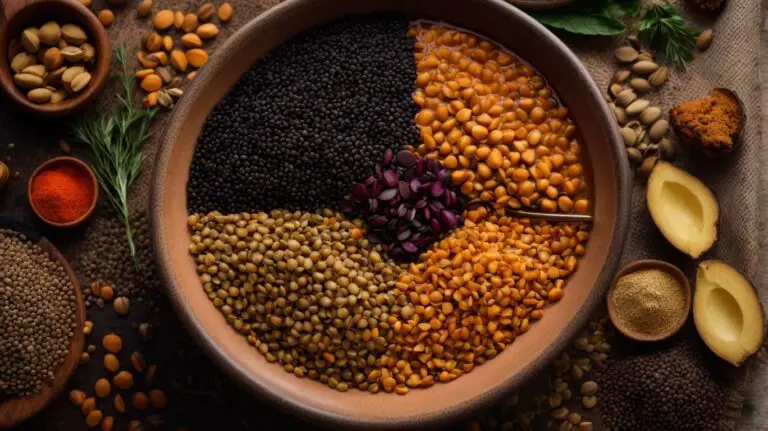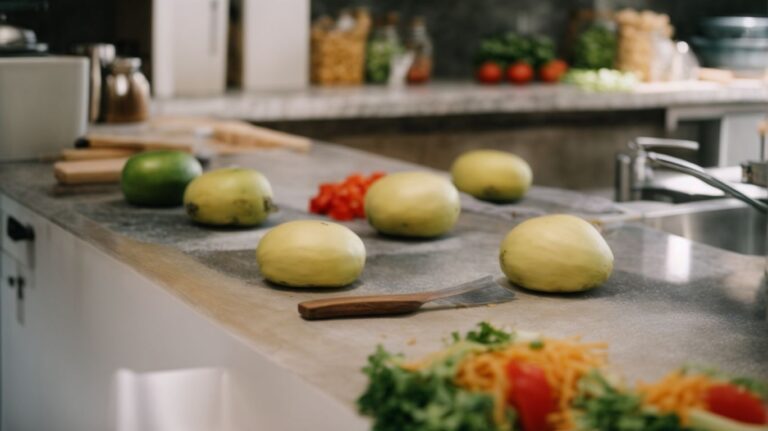How to Cook Giblets From Turkey?
Welcome to my article on giblets! If you’ve ever wondered what giblets are and how to cook them, you’re in the right place.
This comprehensive guide covers everything from the definition of giblets to the different ways you can cook them.
Discover the nutritional benefits and flavor-enhancing qualities of giblets, along with tips for proper preparation and cooking.
If you’re ready to elevate your culinary skills and impress your guests, let’s dive into the world of cooking giblets!
Key Takeaways:
What Are Giblets?
Giblets, often found inside poultry such as turkey or chicken, refer to the edible internal organs of the bird.
Definition of Giblets
The definition of giblets encompasses the heart, liver, gizzard, and neck of poultry like turkey or chicken.
Each of these organs plays a unique role both in the anatomy of the bird and in culinary traditions.
- The heart is a dense, muscular organ responsible for pumping blood throughout the body. When cooked, it has a firm texture and a rich flavor.
- The liver is a vital organ involved in filtering toxins and producing essential enzymes. In cooking, it is prized for its deep, savory taste and smooth texture in dishes like pâtés and gravies.
- The gizzard is a muscular part of the bird’s digestive system that grinds food. When prepared correctly, it becomes tender and flavorful, often used in stews or as a delicacy.
- The neck provides a collagen-rich meat that adds depth to stocks and broths.
Each of these giblets adds complexity and depth to dishes through their distinct textures and flavors.
Types of Giblets
The types of giblets commonly found in poultry such as turkey or chicken include the liver, heart, gizzard, and neck.
Each of these giblets contributes its own distinct flavor and texture to dishes.
- The liver, known for its rich and creamy consistency, adds a depth of umami flavor to gravies and pâtés.
- The heart, with its slightly denser texture, offers a more robust taste that pairs well with herbs and spices.
- The gizzard, often prized for its chewy texture, lends a unique mouthfeel to soups and stews.
- The neck, prized for its collagen-rich meat, can enhance broths and stocks with its savory essence.
Why Should You Cook Giblets?
Cooking giblets not only adds a rich and savory flavor to dishes but also contributes to the creation of delicious stocks and gravies.
Nutritional Benefits
Giblets from turkey or chicken are packed with essential nutrients such as iron, protein, and vitamins.
These nutrient-rich offal parts of poultry provide a significant source of high-quality protein, which is crucial for building and repairing tissues in the body. Giblets contain essential vitamins like Vitamin A, B, and K, playing vital roles in maintaining overall health and well-being. They are also a great source of iron, contributing to the formation of red blood cells and supporting proper oxygen transport throughout the body. Including giblets in your diet can help ensure a well-rounded nutritional intake.
Flavor Enhancer
Giblets serve as a natural flavor enhancer in various dishes, imparting a deep and robust taste to stocks and gravies.
These assorted organ meats, including the heart, liver, gizzard, and sometimes neck, bring a unique depth and richness to culinary creations.
- When simmered slowly, giblets release their savory essence, infusing the cooking liquids with a complex umami flavor that elevates the entire dish.
- The distinctive earthy notes of giblets blend harmoniously with herbs, spices, and aromatics, resulting in a delectable base for soups, stews, and sauces.
How to Prepare Giblets for Cooking?
Preparing giblets for cooking involves a thorough cleaning, trimming of excess parts, and seasoning to enhance their flavors.
Cleaning and Trimming
Cleaning and trimming giblets require meticulous attention to remove any impurities or excess tissues from the organs of poultry like turkey or chicken.
When preparing giblets, it is essential to start by separating them from the whole bird. Lay out the giblets on a clean surface and inspect each piece carefully. Begin by cleaning them under cold running water, ensuring to wash away any blood or debris. Take extra care when trimming off any excess fat, skin, or tough membranes. Use a sharp knife or kitchen shears to precisely remove any unwanted parts, such as the gizzard lining or excess skin. Thoroughly cleaning and trimming the giblets guarantees a flavorful and appetizing final dish.
Seasoning
Seasoning giblets with herbs, spices, and aromatics enhances their natural flavors and complements the taste of poultry like turkey or chicken.
Creating a harmonious blend of seasonings involves a delicate balance of flavors. Common herbs like sage, thyme, and rosemary add earthy depth, while spices such as cinnamon, cloves, and nutmeg bring warmth and complexity. Aromatic ingredients like garlic, onions, and citrus zest can provide layers of flavor. Mixing these components together with a pinch of salt and pepper can transform bland giblets into a savory masterpiece.
What Are the Different Ways to Cook Giblets?
Giblets can be transformed into delectable dishes such as giblet gravy, stuffing, broth, and pâté, adding depth and richness to meals featuring turkey or chicken.
Giblet Gravy
Giblet gravy, made from simmering giblets in stock and thickened with flour, is a classic accompaniment to roasted turkey or chicken.
To begin preparing this delicious gravy, first, ensure you have the giblets (heart, liver, gizzard) from the bird you are roasting. Separate them from the turkey or chicken and set aside.
Next, you will need to make a flavorful stock by simmering the giblets in water along with onions, carrots, celery, and herbs such as thyme and parsley for added depth of flavor.
Once the stock is ready, strain out the solids and set the liquid aside. In a separate saucepan, make a roux by cooking flour in butter until it forms a smooth paste. Then, gradually whisk in the strained giblet stock to create a rich base for your gravy.
Bring the mixture to a simmer, stirring constantly to avoid lumps. Allow it to thicken to your desired consistency before seasoning with salt, pepper, and any additional herbs or spices. Serve this delectable giblet gravy hot over slices of roasted turkey or chicken for a comforting and flavorful meal that will impress your guests.
Giblet Stuffing
Giblet stuffing, a traditional recipe featuring chopped giblets, adds a wonderful flavor dimension to Thanksgiving turkey or chicken.
To make giblet stuffing, start by sautéing chopped giblets in butter until they are cooked through. Next, add diced onions, celery, and garlic to the pan and cook until softened. Then, mix in fresh herbs such as parsley, sage, and thyme for added aroma and flavor.
Season the mixture with salt, pepper, and poultry seasoning to enhance the savory profile. Combine the herb-infused giblets with day-old bread cubes in a bowl, and moisten the mixture with chicken broth until it reaches a moist, but not soggy, consistency.
Transfer the stuffing to a baking dish, cover with foil, and bake alongside your poultry until heated through and golden brown. The result is a delectable stuffing that complements the tender meat perfectly.
Giblet Broth
Giblet broth, simmered with herbs and spices, imparts a rich and flavorful base for soups, stews, and sauces in various turkey or chicken recipes.
Simmering giblet broth involves gently cooking the giblets in water or stock along with aromatic herbs like thyme, rosemary, and bay leaves to enhance the depth of flavors. These herbs not only add complexity but also provide a fragrant aroma to the broth.
Once the broth is prepared, it can be utilized in a myriad of ways. It serves as a perfect base for traditional gravy, adding a robust taste to the dish. A dash of giblet broth can also elevate the flavor of risottos, casseroles, or even braised vegetables.
Giblet Pâté
Giblet pâté, blending cooked giblets with liver and chopped pimentos, offers a creamy and flavorful spread for appetizers or sandwiches.
To embark on creating this delectable dish, start by simmering giblets (such as hearts, gizzards, and livers) until tender, then chop them finely.
You’ll want to sauté the liver in butter until cooked through, adding a touch of depth and richness. Incorporating chopped pimentos provides a burst of color and subtle sweet notes to the pâté. Blend the ingredients together, along with cream, seasoning, and perhaps a hint of brandy for an extra kick. Refrigerate the mixture until set, allowing it to develop its flavors fully before serving. Enjoy this gourmet creation on toasted baguette slices or as a luxurious filling in sandwiches to impress your guests.
What Are Some Tips for Cooking Giblets?
Achieving the perfect giblet dish requires attention to proper cooking time, temperature control, and the judicious use of herbs and spices.
Proper Cooking Time and Temperature
Ensure giblets are cooked to perfection by following recommended cooking times and maintaining appropriate temperatures for turkey or chicken dishes.
Properly cooking giblets is crucial to achieving a delicious and safe dish full of rich flavors.
When cooking giblets, each type like liver, heart, gizzard, or neck requires specific attention to detail. Liver, for example, can easily become tough and overcooked if not timed precisely. The heart and gizzard, on the other hand, benefit from slow cooking over low heat to reach the desired tenderness. By following a reliable recipe and using a meat thermometer to ensure the internal temperature reaches the recommended level, you can create a mouthwatering dish that highlights the natural flavors of the giblets.
Adding Flavor with Herbs and Spices
Enhance the taste of giblets by incorporating a medley of herbs and spices that complement the natural flavors of turkey or chicken dishes.
Regarding seasoning giblets, the key is to strike a balance between enhancing the inherent flavors of the meat and adding layers of complexity to the dish. Herbs and spices such as sage, thyme, rosemary, and cumin can work wonders in transforming the humble giblets into a culinary delight.
Experimenting with different combinations of seasonings can help you discover new flavor profiles and create a signature dish that will impress even the most discerning palates. Whether you prefer a bold and spicy kick or a more subtle and aromatic touch, the right blend of herbs and spices can take your giblets to the next level.
Using Giblets in Other Dishes
Experiment with incorporating giblets into diverse dishes beyond traditional recipes to explore the versatility and flavor dimensions they can bring to various culinary creations.
Giblets, often an underrated part of the bird, can offer depth and richness to a wide range of dishes. For example, chop up giblets finely and mix them into a flavorful stuffing for an extra savory twist. You can also simmer giblets in a broth to create a robust base for soups or stews.
Another creative idea is to blend cooked giblets into a creamy pate or terrine, adding complexity to the overall flavor profile. When sautéed with herbs and spices, giblets can be a delightful addition to pasta sauces or casseroles, infusing them with a unique taste.
How to Serve and Store Cooked Giblets?
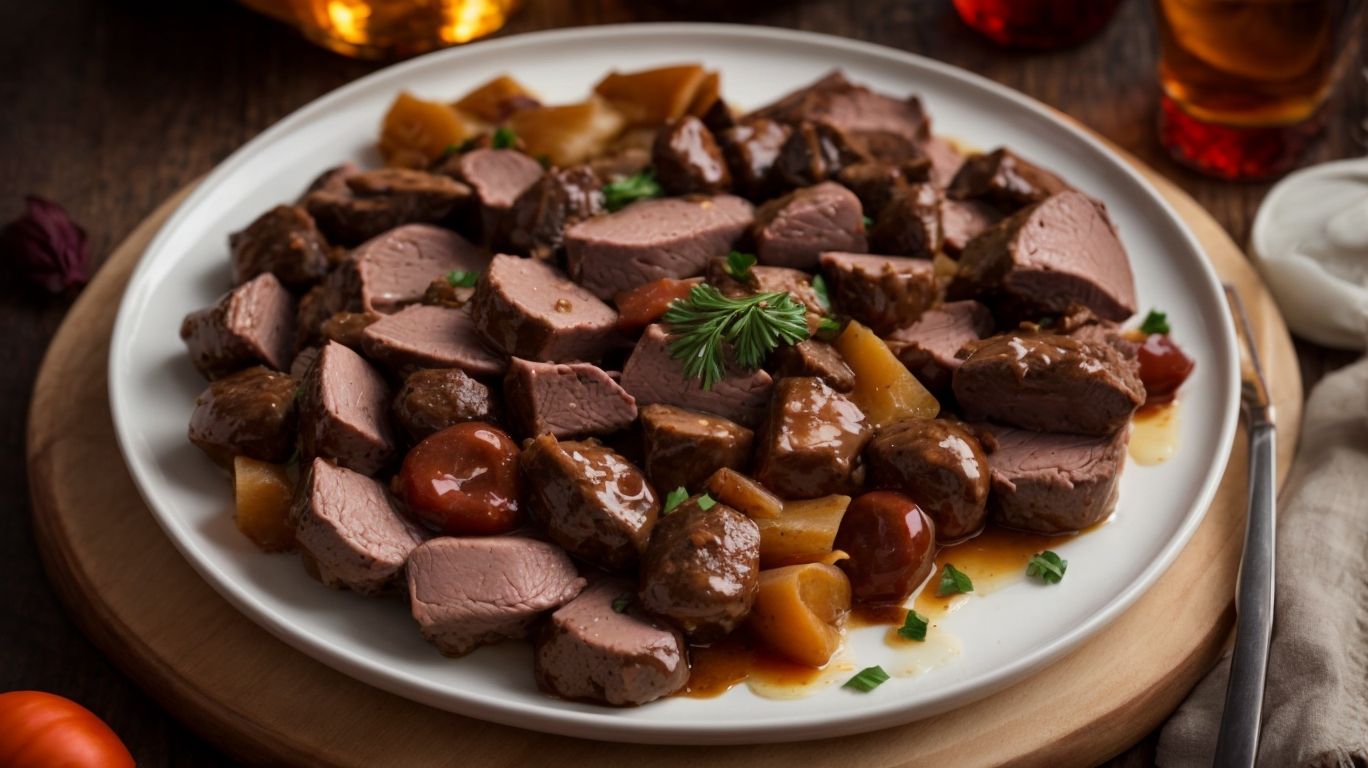
Credits: Poormet.Com – Ethan Young
Master the art of serving and storing cooked giblets with practical tips on presentation, storage methods, and safe reheating practices for turkey or chicken dishes.
Serving Suggestions
Elevate your meal presentation by pairing cooked giblets with classic sides like mashed potatoes, green bean casserole, or popovers for a delightful dining experience.
When combining cooked giblets with mashed potatoes, consider infusing the potatoes with a touch of garlic or parmesan to complement the rich flavors of the giblets. The creamy texture of the potatoes juxtaposes beautifully with the tender giblets, creating a harmonious balance.
For those opting for green bean casserole alongside giblets, a sprinkle of crispy onions on top adds a satisfying crunch to the tender green beans and flavorful giblets. The earthiness of the green beans pairs wonderfully with the savory notes of the giblets, offering a delightful contrast.
To add a touch of sophistication, pair your cooked giblets with light and airy popovers. Their fluffy interior provides a textural contrast to the hearty giblets, while their subtle flavor enhances the overall dining experience.
Proper Storage and Reheating
Ensure the longevity and taste integrity of cooked giblets by following proper storage practices and reheating methods that retain their flavors in turkey or chicken dishes.
When storing cooked giblets, it’s crucial to allow them to cool completely before transferring to airtight containers. This helps prevent bacteria growth and maintains their freshness. Remember to label the containers with the date to track their shelf life.
For reheating, avoid prolonged exposure to high heat to prevent drying out the giblets. Instead, gently warm them in a covered pan with a bit of broth or gravy to retain moisture and flavor. This method ensures that the giblets stay tender and delicious when added back to your favorite dishes.
Frequently Asked Questions
How to Cook Giblets From Turkey?
1. What are giblets and why should I cook them separately from the turkey?
Giblets refer to the internal organs of a turkey, including the liver, heart, gizzard, and neck. These organs cook at a different rate than the rest of the turkey, so it’s important to cook them separately to ensure they are fully cooked and safe to eat.
2. Can I use giblets to make gravy for my turkey?
Yes, giblets are often used to make a flavorful gravy to accompany the turkey. Simply chop them up and add them to the drippings from the cooked turkey, along with some broth, flour, and seasonings to create a delicious gravy.
3. How do I prepare the giblets before cooking?
Before cooking, the giblets should be cleaned and trimmed of any excess fat and membranes. You can also remove the skin from the neck if desired. Rinse them under cold water and pat dry with paper towels before proceeding with the cooking process.
4. What is the best way to cook giblets from turkey?
There are a few different methods for cooking giblets, including boiling, sautéing, or roasting. Boiling is the easiest and quickest method, while sautéing or roasting can add more flavor. Check out different recipes and choose the method that suits your taste.
5. How long should I cook giblets from turkey?
The cooking time for giblets will vary depending on the method you choose and the size of the giblets. Generally, it takes about 20-25 minutes to boil giblets, 10-15 minutes to sauté them, and 30-40 minutes to roast them. Use a meat thermometer to ensure they are fully cooked before serving.
6. Can I use giblets from a frozen turkey?
Yes, you can use giblets from a frozen turkey, but make sure to thaw them completely before cooking. It’s best to thaw them in the refrigerator overnight, but you can also use the defrost setting on your microwave. Do not refreeze the giblets once they have been thawed.

